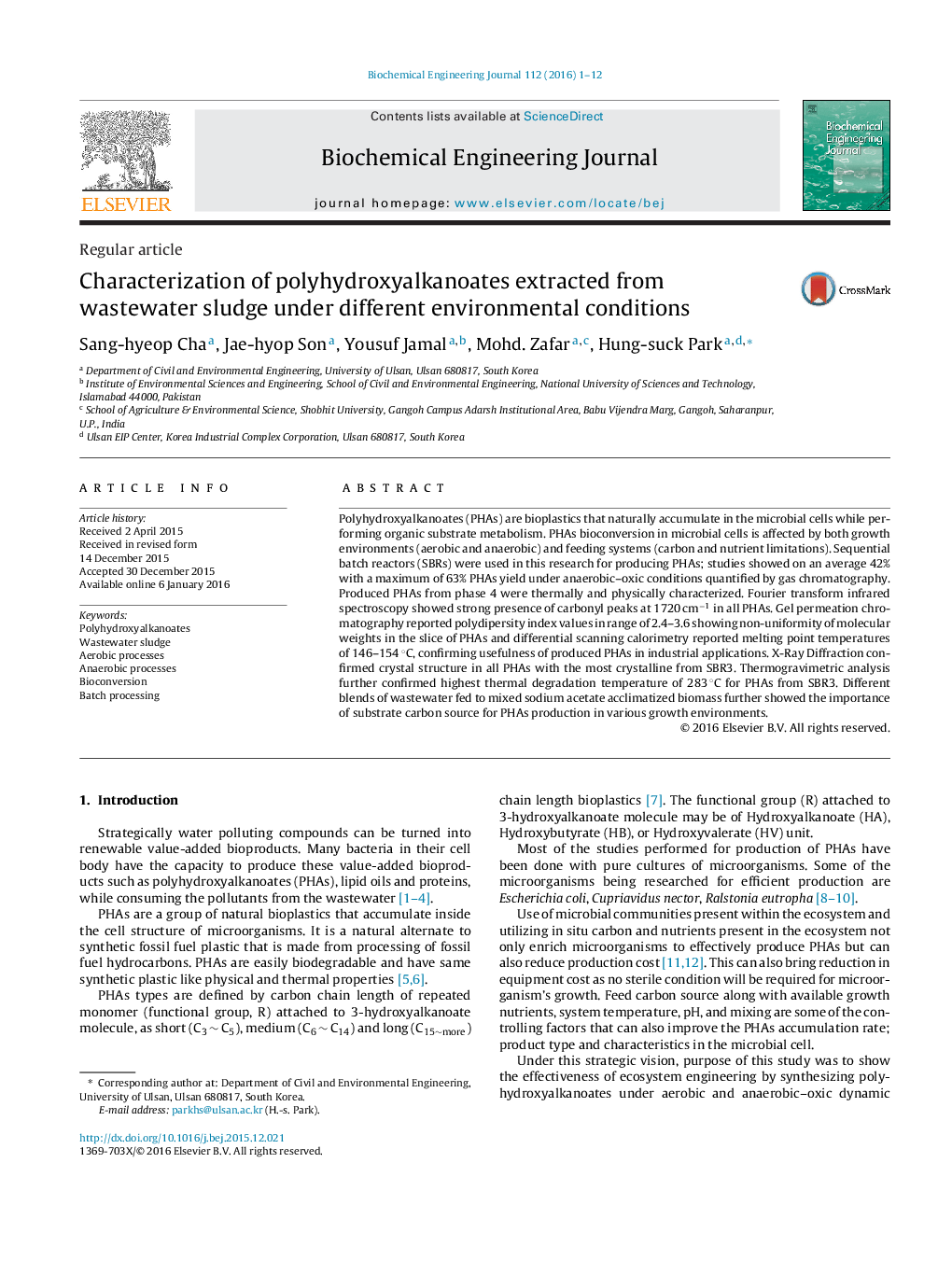| Article ID | Journal | Published Year | Pages | File Type |
|---|---|---|---|---|
| 2701 | Biochemical Engineering Journal | 2016 | 12 Pages |
•Carbon and nutrient ratios on polyhydroalkonates (PHAs) production in wastewater sludge were studied.•Effects of aerobic and anaerobic environmental conditions on PHAs accumulation in microbes were considered.•A maximum of 63% PHAs yield was observed under anaerobic-oxic conditions.•Quantification and qualification of PHAs produced were done by gas chromatography, FTIR, DSC, XRD, GPC, and TGA techniques.
Polyhydroxyalkanoates (PHAs) are bioplastics that naturally accumulate in the microbial cells while performing organic substrate metabolism. PHAs bioconversion in microbial cells is affected by both growth environments (aerobic and anaerobic) and feeding systems (carbon and nutrient limitations). Sequential batch reactors (SBRs) were used in this research for producing PHAs; studies showed on an average 42% with a maximum of 63% PHAs yield under anaerobic–oxic conditions quantified by gas chromatography. Produced PHAs from phase 4 were thermally and physically characterized. Fourier transform infrared spectroscopy showed strong presence of carbonyl peaks at 1720 cm−1 in all PHAs. Gel permeation chromatography reported polydipersity index values in range of 2.4–3.6 showing non-uniformity of molecular weights in the slice of PHAs and differential scanning calorimetry reported melting point temperatures of 146–154 °C, confirming usefulness of produced PHAs in industrial applications. X-Ray Diffraction confirmed crystal structure in all PHAs with the most crystalline from SBR3. Thermogravimetric analysis further confirmed highest thermal degradation temperature of 283 °C for PHAs from SBR3. Different blends of wastewater fed to mixed sodium acetate acclimatized biomass further showed the importance of substrate carbon source for PHAs production in various growth environments.
